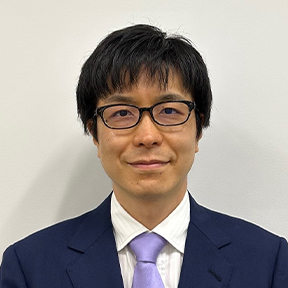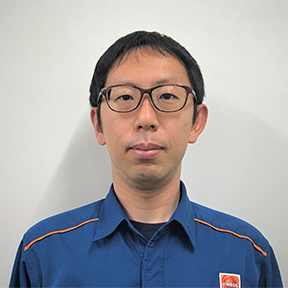2024.01.18

Direct MCH®, a pioneering technology developed by ENEOS to serve as a powerful solution for hydrogen transport and storage

An energy source that generates no carbon dioxide emissions, “CO2-free hydrogen” is drawing
attention around the world from parts of the business sector promoting the green
transition.
One major method of transporting CO2-free hydrogen efficiently involves the use of storage
materials known as hydrogen carriers. Methylcyclohexane (MCH), a liquid produced by the
chemical reaction of hydrogen with toluene, is an efficient hydrogen carrier due to its
large hydrogen concentration capacity, which is over 500 times higher on a per-volume basis
than that of hydrogen gas.
Takeru Ishimoto from the Hydrogen Business Department’s Domestic Hydrogen Supply Chain Group
described the recent strategies for building hydrogen supply chains.
“It thus plays a key role in building hydrogen supply chains. The primary reason is related
to similarities between hydrogen supply chain processes (MCH transport and hydrogen
extraction) and those of petroleum products. This means that existing assets related to oil
refineries, such as petroleum tanks and oil tankers, can be utilized as a measure to
substantially cut initial investment costs. Also, MCH, a liquid that is stable at ordinary
temperatures and pressures, is easy to handle and can be stored in large quantities, which
provides it with a strong advantage in terms of energy security.”
Direct MCH® key to keeping hydrogen production costs down

Research and development efforts are currently being promoted around the world in pursuit of
innovative hydrogen transport technology. Under this background, ENEOS is endeavoring to
achieve more efficient MCH production processes with the aim of lowering hydrogen market
prices. One of the latest achievements from this endeavor is Direct MCH®, an
attention-grabbing and worldwide pioneering technology.
Kota Miyoshi, a member of Direct MCH® development team, Hydrogen Carrier R&D Group at the
Central Technical Research Laboratory’s Innovation Technology Center, explained the
technology as follows: “The conventional process of producing MCH using renewable energy
consists of two steps: (1) electrolyze water using renewable energy to separate it into
oxygen and hydrogen, which is then stored in high-pressure tanks; and (2) mix the stored
hydrogen with toluene to induce a chemical reaction that produces MCH. In comparison, Direct
MCH® aims to replace the conventional two-step process of water electrolysis and MCH
production with a single-step process in which toluene is supplied directly into the water
electrolyzer to induce an electrochemical reaction that produces MCH. This can eliminate the
need for hydrogen gas tanks and MCH production plants, thus streamlining the production
process and achieving a substantial cost reduction.”
Miyoshi started the related study based on a suggestion made by his then supervisor when he
was in his third year with the company and engaged in fuel cell development. The supervisor
suggested considering the possibility of producing MCH by feeding toluene directly into a
fuel cell device to create an appropriate reaction.
”In those days,” Miyoshi recalled, “when the whole industry was seeking to create
high-purity hydrogen gas by removing as many impurities as possible, the idea of adding
other elements, including toluene, would have been rejected as being preposterous by many
researchers. However, our team gave this unconventional approach a try, and it proved to be
workable as a result of our experimentation. The full-scale project to pursue the theme was
then launched at the Laboratory around 2011 to create a proprietary technology belonging to
ENEOS.”
Oil firm seizing an opportunity made possible by carbon neutrality trend
ENEOS is looking at Australia, a country with abundant sources of renewable energy, as a
target for implementing Direct MCH® for real-world business development. In 2021, the
technology was adopted for a demonstration project for the export of solar energy-based
green MCH produced in Australia to Japan, where the extracted hydrogen was used to power a
fuel cell vehicles (FCV). The result of a partnership among ENEOS, Chiyoda Corporation and
Queensland University of Technology, the project was the first of its kind in the world to
succeed.
In January 2023, ENEOS established a green MCH plant in Australia with a 150 kW electrolyzer
offering an electrode surface area of three-square meters and a 250 kW solar power
generator. In June of the same year, MCH produced by the plant was exported to Japan, and
the related hydrogen was extracted at a hydrogen station to power a fuel cell bus to run on
a public road. Based on this track record, the company will move forward to expand the
real-world implementation scope, primarily by developing a megawatt-class large
electrolyzer, a minimum requirement for commercial-scale operation, and related processes.

“In order to create a hydrogen-based economy, it is imperative to lower hydrogen prices to
levels affordable to many users,” said Ishimoto. “Despite the technical challenges, we
believe Direct MCH®, a large-capacity, stable, and efficient hydrogen carrier production
technology, will play a key role in popularizing hydrogen so that many people can enjoy the
benefits. I was previously engaged in petroleum production before being transferred to the
Hydrogen Business Department, which was chiefly in response to the major shift toward carbon
neutrality. Although this situation is posing a huge challenge to the oil production
industry, we should look at it as a good opportunity to become a leading player in supplying
carbon-neutral energy and materials. We are striving to develop our proprietary technology
to facilitate the widespread use of hydrogen.”
Ishimoto and Miyoshi both emphasized the importance of promoting technical collaborations
with other companies to achieve this goal, rather than pursuing independent efforts. ENEOS
is building CO2-free hydrogen supply chains based on Direct MCH® to cover the production,
transport, and use of products, with the objective of contributing to the achievement of a
carbon-neutral society.
This demonstration was conducted as part of Green Innovation Fund Projects of Large-scale
Hydrogen Supply Chain Establishment / Direct MCH electrosynthesis technology development
commissioned by the New Energy and Industrial Technology Development Organization (NEDO).
INTERVIEWEE

TAKERU ISHIMOTO
Domestic Hydrogen Supply Chain Group, Hydrogen Business Department

KOTA MIYOSHI
Hydrogen Carrier R&D Group, Innovation Technology Center, Central Technical Research Laboratory
ENEOS Holdings, Inc.
ENEOS Corporation
1-1-2 Otemachi, Chiyoda-ku, Tokyo
Established in 1888. The ENEOS Group is taking on the challenge of achieving both a
stable supply of energy and materials and the realization of a carbon-neutral
society. Responding to a changing world in a nimble and agile manner, the Group
strives to promote an energy transition away from fossil fuels and to contribute to
the formation of a decarbonized, recycling-oriented society in line with its mission
to support the stable supply of energy, resources, and materials and with a view to
maximizing its corporate value. ENEOS Corporation is engaged in the energy business,
which forms the core of this endeavor.
